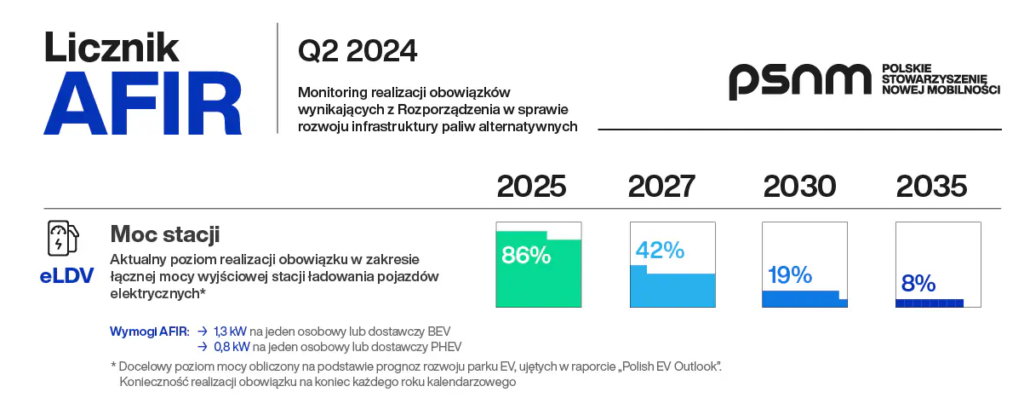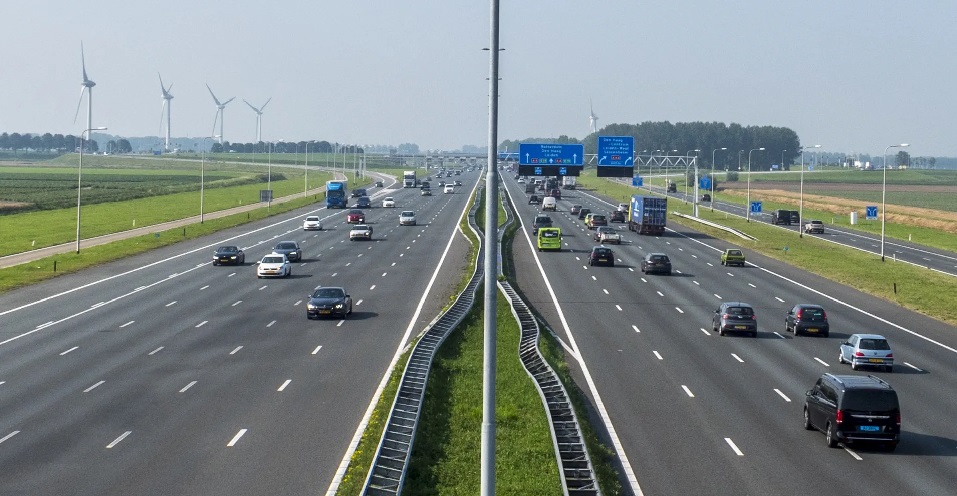Poland faces a significant delay in achieving the objectives of the Alternative Fuels Infrastructure Regulation (AFIR) within the Trans-European Transport Network (TEN-T).
Despite progress in installing charging stations for electric vehicles (EVs), the country has only implemented 9% of the required infrastructure for the central network by 2025 and a mere 3% for 2027.
The situation is even more critical in the comprehensive TEN-T network, where the compliance level is close to 0%.

This is compounded by the lack of progress in establishing charging zones for heavy-duty zero-emission vehicles (HDEV), which are required to have a minimum capacity of 2,800 kilowatts by 2027.

According to Aleksander Rajch, a member of the PSNM board, the slow expansion of the network is not due to a lack of investor activity but rather the “existence of a very unfavourable regulatory environment.”
The executive adds, “For Poland to have a chance to meet its obligations to the European Union (EU), it is crucial to introduce legal changes and launch the necessary support instruments (including a programme to cover connections for high-power stations).”
He also asserts that decision-makers should “ensure proper coordination of activities with key stakeholders, particularly public charging station operators, DSOs, and the General Directorate for National Roads and Motorways.”
AFIR sets ambitious targets for developing the TEN-T network, with specific deadlines for completing key components.
The central network must be ready by December 31, 2030, the extended central network by 2040, and the global network by 2050.
Notably, nine transport corridors are being established to enable more sustainable flows across Europe.
These corridors are designed to promote efficient and connected transport between countries, which will be crucial for decarbonizing the sector.
On the other hand, Poland also faces challenges in increasing its power capacity.
Compared to the first quarter data, where 68% of the 2025 target was met, the country has increased the power of its stations by more than a quarter, reaching nearly 60 megawatts. However, the real challenge lies in meeting long-term goals.

According to AFIR guidelines, it is essential to adjust the total power of charging stations according to the number of registered electric cars, with 1.3 kilowatts for zero-emission vehicles and 0.8 kilowatts for plug-in hybrids.
While Poland currently meets the minimum power requirements, this situation is due to the relatively small fleet of electric cars compared to infrastructure investments.
Jan Wiśniewski, Director of the PSNM Research and Analysis Centre, states that the country has already fulfilled 86% of its power obligations for the coming year, but the anticipated growth of electrified vehicles will require a significant increase in charging capacity in the coming years.
“By 2030, power needs to be multiplied by five, and by 2035, by twelve, which places the current compliance level at just 19% for 2030 and a mere 8% for 2035,” he explains.

To add to these factors, the recent decision by the Polish National Fund for Environmental Protection and Water Management (NFOŚIGW) to suspend electric vehicle subsidies for the remainder of 2024, following the depletion of the “Mój Elektryk” programme budget, has raised concerns in the sector.
Undoubtedly, the absence of incentives and stagnation in figures have created uncertainty in the Polish electromobility market, sparking worry among industry experts who question Poland’s ability to achieve its national and EU goals.
Will Poland overcome its current challenges and align with the demands of the transition to more sustainable transport?








